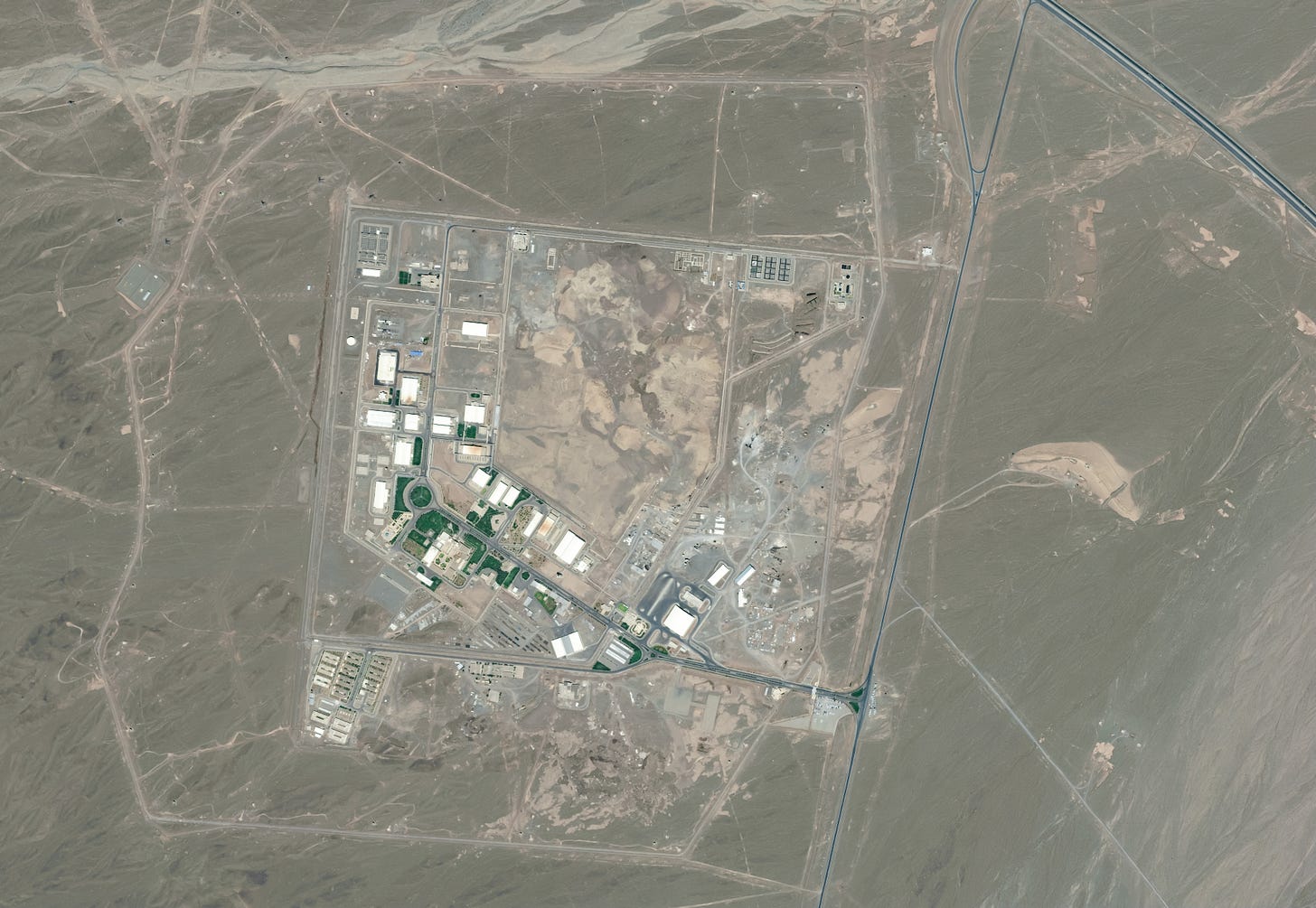Larry Johnson commented,
Sy and Pepe agree on one point — there was at least one Israeli jet that flew through Jordanian airspace and then something happened once the plane (or planes) crossed into Iraq or Syria. Here the accounts diverge. Pepe’s sources claim one Israeli jet, an F-35 was shot down. Sy’s source insists that Israel used two jets that launched an unidentified “supersonic” missile at a site near Natanz.
Let me reiterate that there is some bullshit afoot because the report does not make sense. If Israel used a Rampage missile then the only way Israel could strike a target inside Iran would require that the Israeli plane penetrated deep into Iranian airspace. Why? Because the Rampage only has an operational range of 150 to 250 km. The distance from Isfahan, Iran to Baghdad, Iraq is almost 1000 kilometers. Do the math.
Next question. Where is the wreckage of the missile? It does not disintegrate. The only other air to ground missile in Israel’s arsenal is the Sky Spear. It was unveiled at the 2023 Paris air show, but there are no details about its operational distance. We have ZERO evidence that Israeli aircraft penetrated Iranian airspace, which means that Israel is now fielding an air to ground missile that has more than a 1000 km range. Not likely.
Sy Hersh
 Satellite imagery from 2013 of the Natanz Fuel Enrichment Plant in Iran. / Satellite image (c) 2020 Maxar Technologies.
Satellite imagery from 2013 of the Natanz Fuel Enrichment Plant in Iran. / Satellite image (c) 2020 Maxar Technologies.
Why Israel did not attack Iran’s suspected nuclear weapons facility
The tit-for-tat attacks between Israel and Iran that consumed much of the world’s attention over the past two weeks reached a crescendo on April 13, when an Iranian drone and missile assault on Israel failed after an armada of allied fighter planes—secretly organized by the Pentagon, with the support of Russia—shot down more than three hundred armed Iranian drones and missiles headed for targets in Israel.
The Middle East and the Western world anxiously waited for the Israeli response. It came a few days later when two Israeli fighter planes, operating outside Iran’s border, fired supersonic missiles at a high-tech Iranian defensive missile site that was protecting Iran’s most important nuclear enrichment site, near Natanz, eighty miles north of Isfahan.
The New York Times, in a dispatch from Washington, depicted the attack as limited but a ‘potentially big signal” to the Iranian leadership, The message was that Israel was willing and capable of attacking the heart of the Iran’s most important weapons complex: “The taboo against direct strikes on each other’s territory was now gone.” Similar worried assessments were published around the world. A later Times report told of a conversation between President Joe Biden and Israeli Prime Minister Benjamin Netanyahu, in which the unpredictable Israeli leader was said to have been talked out of further, and far more aggressive, attacks. The world had perhaps moved away from the brink.
Israel’s Plot for a Nuclear Attack on Iran: All Three Major Powers Are Invested in Protecting Israel
Was Israel Going to Nuke Iran as Pepe Escobar’s Source Claims?